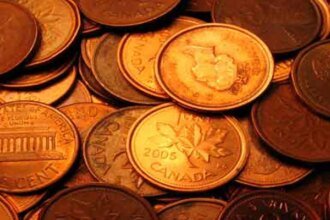- EUR/GBP softens to near 0.8305 in Friday’s early European session, down 0.23% on the day.
- The UK Retail Sales rose 0.3% MoM in September vs. -0.3% expected.
- The dovish remarks of the ECB weigh on the Euro against the GBP.
The EUR/GBP cross loses traction to around 0.8305 on Friday during the early European trading hours. The Pound Sterling (GBP) strengthens after the release of UK Retail Sales data for September. Later on Friday, the Eurozone Current Account for August will be published.
Data released by the Office for National Statistics on Friday showed that UK Retail Sales increased 0.3% MoM in September from a rise of 1.0% in August. This figure came in stronger than the estimations of a decline of 0.3%. On an annual basis, Retail Sales in the UK climbed 3.9% in September versus 2.3% (revised from 2.5%) prior, above the consensus of 3.2%.
The GBP attracts some buyers in an immediate reaction to the encouraging UK Retail Sales and drags the cross lower to the lowest level since April 2022. However, the rising expectation that the Bank of England (BoE) will lower borrowing costs by 25 basis points (bps) at its upcoming meeting in November and December after a surprise fall in the UK Consumer Price Index (CPI) inflation might cap the GBP’s upside.
On the other hand, the Euro (EUR) remains under selling pressure after the European Central Bank (ECB) decided to cut the deposit rate by a further 25 bps at its October meeting as inflation in the Eurozone eased to 1.8% in September, below the ECB’s 2% target.
“We believe that downside risks to growth in a context of easing inflationary pressure will lead to more rate cuts starting in December and continuing in 2025 until interest rates are back around a neutral level, that the ECB itself estimates around 2%,” noted Gianluigi Mandruzzato, a senior economist at EFG Asset Management.
Pound Sterling FAQs
The Pound Sterling (GBP) is the oldest currency in the world (886 AD) and the official currency of the United Kingdom. It is the fourth most traded unit for foreign exchange (FX) in the world, accounting for 12% of all transactions, averaging $630 billion a day, according to 2022 data. Its key trading pairs are GBP/USD, also known as ‘Cable’, which accounts for 11% of FX, GBP/JPY, or the ‘Dragon’ as it is known by traders (3%), and EUR/GBP (2%). The Pound Sterling is issued by the Bank of England (BoE).
The single most important factor influencing the value of the Pound Sterling is monetary policy decided by the Bank of England. The BoE bases its decisions on whether it has achieved its primary goal of “price stability” – a steady inflation rate of around 2%. Its primary tool for achieving this is the adjustment of interest rates. When inflation is too high, the BoE will try to rein it in by raising interest rates, making it more expensive for people and businesses to access credit. This is generally positive for GBP, as higher interest rates make the UK a more attractive place for global investors to park their money. When inflation falls too low it is a sign economic growth is slowing. In this scenario, the BoE will consider lowering interest rates to cheapen credit so businesses will borrow more to invest in growth-generating projects.
Data releases gauge the health of the economy and can impact the value of the Pound Sterling. Indicators such as GDP, Manufacturing and Services PMIs, and employment can all influence the direction of the GBP. A strong economy is good for Sterling. Not only does it attract more foreign investment but it may encourage the BoE to put up interest rates, which will directly strengthen GBP. Otherwise, if economic data is weak, the Pound Sterling is likely to fall.
Another significant data release for the Pound Sterling is the Trade Balance. This indicator measures the difference between what a country earns from its exports and what it spends on imports over a given period. If a country produces highly sought-after exports, its currency will benefit purely from the extra demand created from foreign buyers seeking to purchase these goods. Therefore, a positive net Trade Balance strengthens a currency and vice versa for a negative balance.





















